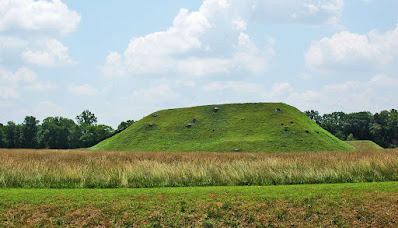EVIDENCE REWRITES EARLY INDIGENOUS-COLONIZER ENCOUNTERS
Native individuals in Oconee Valley—present-day main Georgia—continued to live and proactively withstand European influence for nearly 150 years after the arrival of Hernando de Soto, proof recommends.
In American background, we learn that the arrival of Spanish travelers led by de Soto in the 1500s was a watershed minute leading to the break down of Native people and customs throughout the southeastern Unified Specifies.
These expeditions unquestionably led to the fatalities of countless Native individuals and the relocation of remaining people.
banyak jenis permainan dan kenyamanan
But the searchings for, released in American Classical times, talk to the resistance and durability of Native individuals in the face ofin the face of European insurgence, says lead writer Jacob Lulewicz, a lecturer in archaeology at Washington College in St. Louis.
"The situation study provided in our paper reframes the historic contexts of very early colonial encounters in the Oconee Valley by way ofby way of highlighting the durability and endurance of Native Mississippian customs and rewriting stories of communications in between Spanish colonizers and Native Americans," Lulewicz says.
It also attracts right into question the intentions behind very early explanations and interpretations that Euro-Americans suggested about Native earthen mounds—platforms built from dirt, clay, and rock that were used for important events and routines.
"By the mid-1700s, much less compared to 100 years after the desertion of the Dyar pile [now immersed under Lake Oconee], explanations for the non-Indigenous beginnings of earthen mounds were being espoused. As much less compared to 100 years would certainly have passed in between the Native use mounds and these explanations, maybe suggested that the intentions for these misconceptions were purposively racist, rejecting what would certainly have been a current cumulative memory of Native use for explanations that took, and disenfranchised, these backgrounds from modern Native individuals," Lulewicz says.
DYAR MOUND AND ARTIFACTS
College of Georgia archaeologists excavated the Dyar pile in the 1970s to earn way for a dam. Lulewicz and coauthors received financing from the USDA Woodland Solution to re-date the system pile, which included classic pens of Native routines and events.
"WITHOUT THIS TYPE OF WORK, WE ARE CONTRIBUTING TO THE DISENFRANCHISEMENT OF INDIGENOUS PEOPLES FROM THEIR HISTORY."
Using advanced radiocarbon dating methods and complex analytical models, contemporary archaeologists have the ability to effectively construct high-resolution, high-precision chronologies. Oftentimes, they can determine, within a 10- to 20-year range, days of points that happened as much back as 1,000 years back.



